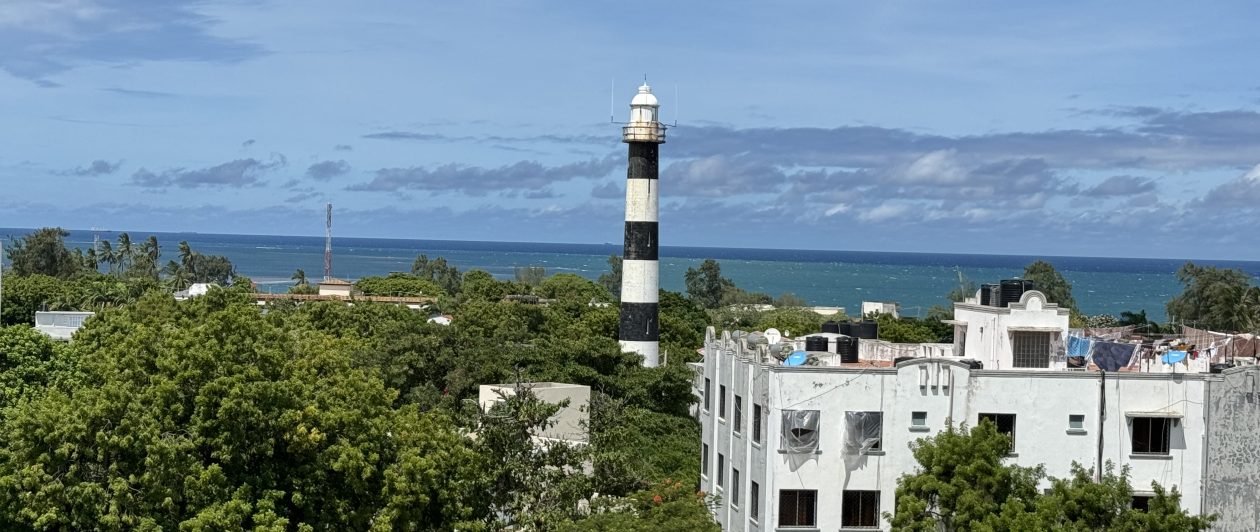Every time we travel to Kenya to visit Hitesh’s family, I would stop by the Kazuri boutique in Nairobi and pick up a bracelet. I have been buying Kazuri bead jewelry for over two decades now, and even today, when I wear those bracelets I get compliments on them. They are timeless pieces.
The do-good beauty of Kazuri beads
I bought these clay-fired jewelry for their beauty, but what really drew me to this unique jewelry boutique is their business philosophy. Even before fair trade practices became fashionable, and even before empowering women in developing countries became a trend, Kazuri Beads has been providing gainful employment to single women in Kenya for over 30 years now.

When I found out about the Kazuri Bead Factory in Nairobi I was so excited to tour their facilities. I had to make time for this tour on our recent visit to Nairobi.

Kazuri Bean Factory
Kazuri, which means “small and beautiful” in Swahili, began in 1975 as a tiny workshop experimenting with making handmade beads. The company’s mission is to provide sustainable employment opportunities specifically to single mothers who support their families. Rather than re-word the Kazuri story and mission statement I thought I would just quote them here from their web site.
“We started with two Kenyan women and soon discovered that there were many other women in the villages around Nairobi, most of whom were single mothers, who were in great need of regular employment. Driven by the desire to provide such opportunities, Kazuri has grown and today we have a large work force skilled in the making of handmade jewelery.
The Kazuri workshop in Karen, Nairobi employs over 340 women, mostly single mothers. It is equipped with a clinic, providing free medical care for the employees and their immediate families. Kazuri also absorbs 80% of medical bills for treatment received outside the factory clinic.
In the developing world of today’s Africa, the greatest contribution we can make is to create employment, especially for the disadvantaged and this remains our guiding philosophy. The result is reflected in the strength of the Kazuri Family and the beauty of our products.”
(The late) Mark and Regina Newman.

When we arrived at the Kazuri Bead Factory I must say I was surprised at their facilities. I was expecting a building with factory like machines and an assembly line style set up. But what I saw really took me by surprise. The Kazuri Bead Factory is actually a small compound with a few small one-story shacks where all the clay molding, assembly, painting, and packaging are done. At the reception area we were met by our designated tour guide who gave us a tour of the Kazuri Bead facilities.


The tour started at the first shack, which was the clay preparation area for all the jewelry beads. Our tour guide mentioned that for decades they had clay shipped from the UK, which they molded into their hand-made jewelry. Then a few years ago they discovered that clay from the Mount Kenya region worked just as well and have switched now to locally sourced clay to make all their jewelry. At this station we got to watch how clay is pressed, how the moisture is squeezed out of it until it is pliable, and finally ready to be molded.
Once the clay is prepped it is sent to the pottery and bead making room where women mold the clay into various shapes and sizes.


A standard template is used to keep the clay beads a consistent shape and size. Here we were introduced to an elderly lady at the clay molding stations who has been working at Kazuri since the company started in 1975.
After the beads are shaped, they are dried and sent to the painting room where women hand-paint each and every bead.



After the beads are painted they are strung on metal rods to get baked in high-temperature clay ovens.
Once the beads are fired, they are returned to the women who painted them. These women check for any errors in designs or cracks in the clay beads. If there are mistakes, they fix them and send the beads back to the oven. If the beads are fine, they either add more design to the bead or forward them along to the assembly table where they are strung into beautiful necklaces, bracelets and earrings.



The clay-fired jewelry are then packaged and shipped all over Kenya to artist boutiques and jewelry stores. At the end of the tour we got to stop by the factory store to purchase many of the jewelry made here.

Visiting the Kazuri Bead Factory was a unique opportunity to see how the jewelry I have admired and worn for so many years is made. I was happy to see that the techniques used for making Kazuri jewelry is still all hand-made from start to finish.
I don’t know if Kazuri jewelry is available outside of Kenya, but if you do come across their jewelry, know that if you purchase that piece the net profits are going towards sustainable, worthwhile, long-term employment of single Mothers in Kenya.
For more information on Kazuri beads, check out their web site. Kazuri Beads
Kazuri. Small and Beautiful


















Beautiful! You have captured the process of bead making very well.
Thanks for sharing.
Glad you enjoyed the article Basanthi! Kazure jewelry is one of my favorite jewlery pieces.